Art World
A Neuroscientist and a Physicist Used A.I. to Recreate a Lost Painting Buried Under a Beloved Picasso Canvas
They've also released NFTs based on the lost image.
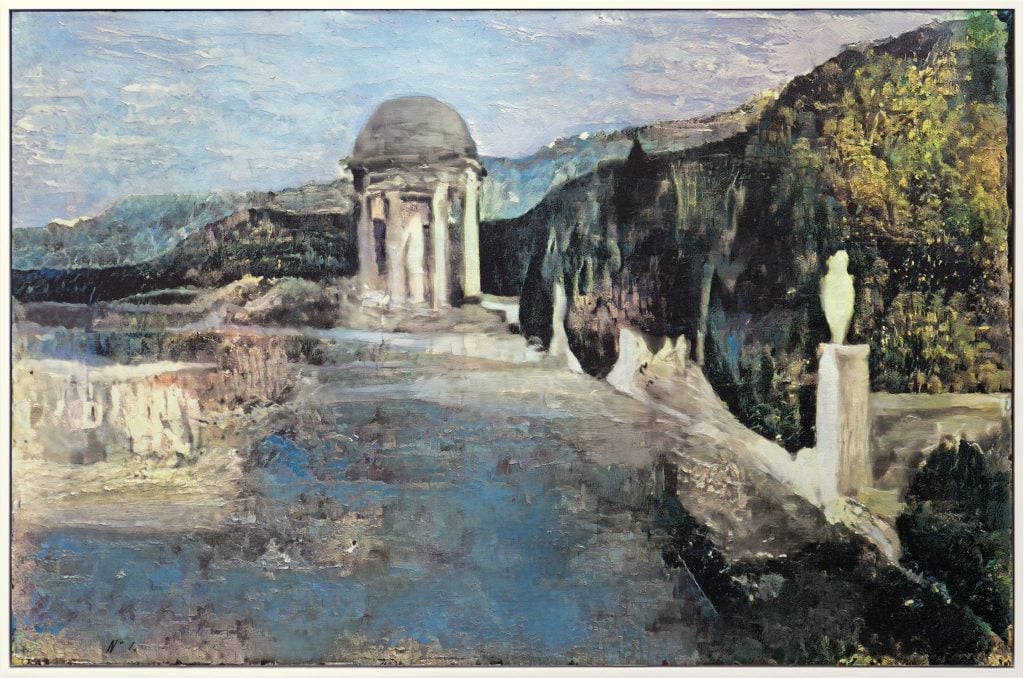
They've also released NFTs based on the lost image.

Sarah Cascone

To mark the 48th anniversary of the death of Pablo Picasso today, a pair of scientists working at the intersection of art and artificial intelligence is releasing a set of NFTs based on a recreation of a lost artwork hidden beneath one of the famed artist’s finished canvases, believed to be by Santiago Rusiñol.
The project, called Oxia Palus, is the brainchild of two University College London PhD candidates, Anthony Bourached and George Cann. It uses machine learning, deep networks, and neural-style transfer algorithms developed by researchers at the University of Tübingen in Germany to analyze ghostly X-rays of overpainted artworks. Based on the artist’s known works, the computer can generate a full-color version of the lost composition.
The duo first tested out the process on Picasso’s The Old Guitarist, publishing their results in a paper titled “Raiders of the Lost Art” in 2019.
To date, Oxia Palus has generated color images of 20 lost paintings, previously seen only via X-ray. The next step was using 3-D printing technology to produce textured canvases of the lost paintings with realistic brushstrokes.
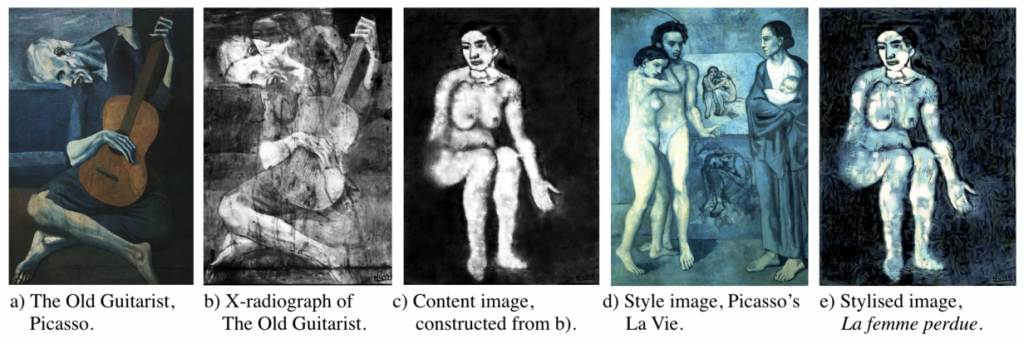
Oxia Palus used X-rays to recreate a lost Pablo Picasso painting. Photo courtesy of Oxia Palus.
“There are potentially thousands of works out there that we could see in the next few years that haven’t been seen in hundreds of years,” Cann told Artnet News.
It’s an unlikely project for two scientists. Bourached’s studies are in high dimensional neuroscience, while Cann on efforts to detect life on Mars. The name Oxia Palus actually comes from Cann’s dissertation work.
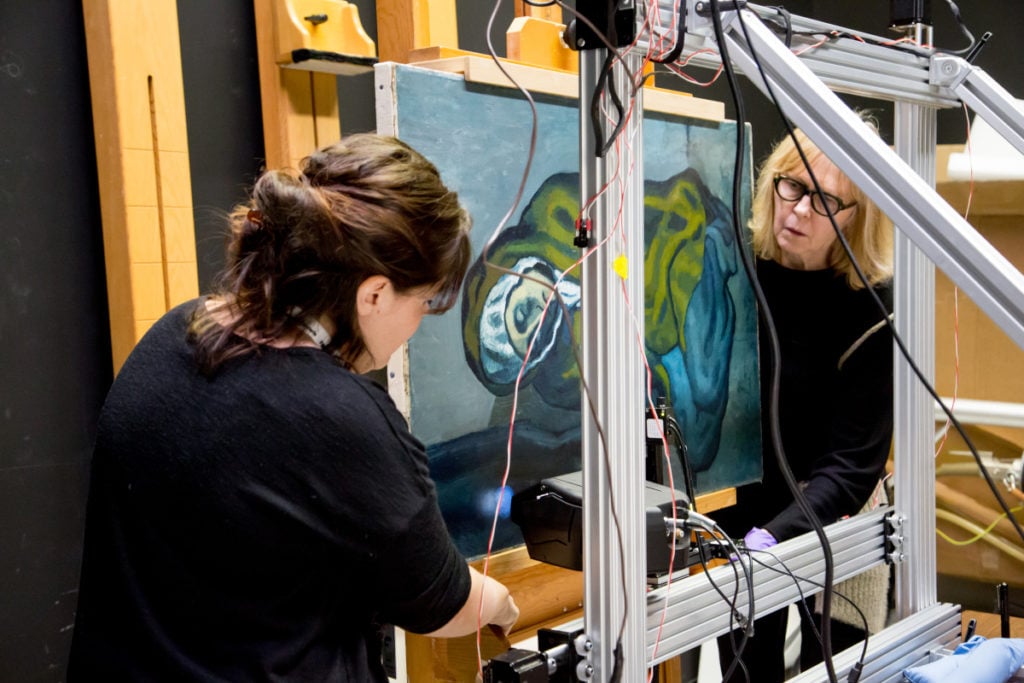
X-ray fluorescence instrument set up for the scan of Picasso’s The Crouching Beggar. © Art Gallery of Ontario (AGO)
“It’s a region of Mars that has a lot of interest in the search for life, in particular in the subsurface,” Cann said. “In an analogous sense, with the exploration of this world and the search for life below it, we’re doing a very similar thing, but under the surface of the paint.”
Bourached and Cann have christened their high-tech replicas “NeoMasters,” and hope to one day apply the same process to lost works for which there only exists a written description.
“This is a contrast to a lot of current A.I. art, which is generative, about making something new and creative,” Bourached told Artnet News. “We’re looking backward to artists who have stood the filter of time in terms of cultural, societal, and historical impact.”
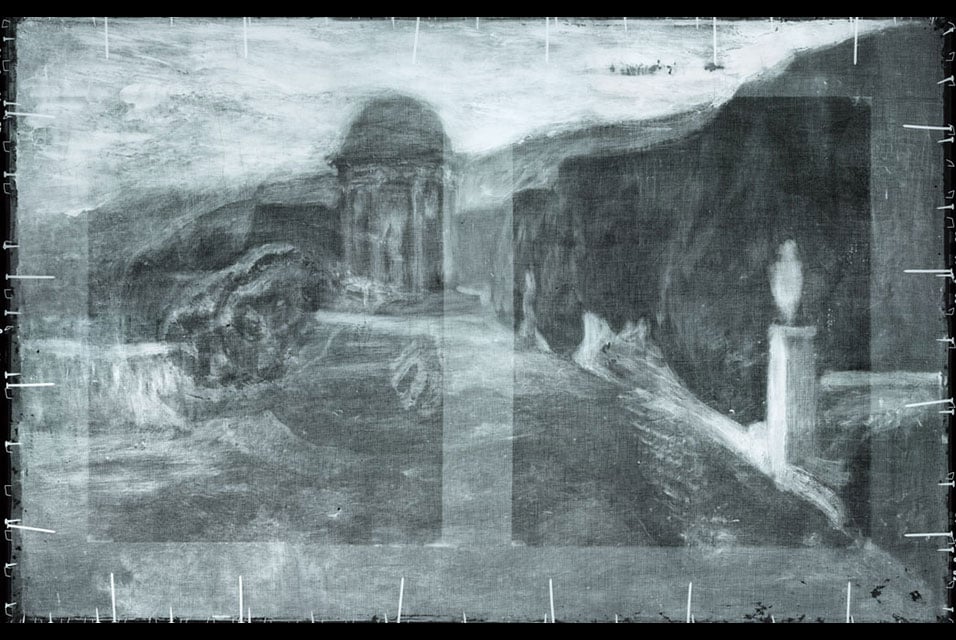
X-ray radiography of Pablo Picasso’s La Miséreuse accroupie (The Crouching Woman), 1902, reveals a landscape hidden beneath the visible surface. Photo courtesy of the Art Gallery of Ontario.
The first physical recreation of a lost painting comes from Picasso’s 1902 work La Miséreuse Accroupie (The Crouching Beggar). As a young artist in Barcelona unable to afford new art supplies, he painted it atop an existing work from one of his contemporaries.
Evidence of that lost painting could be seen through cracks on the work’s surface, revealing traces of the other composition below. But it wasn’t until the Art Gallery of Ontario, which owns the piece, examined it with a portable x-ray fluorescence scanner in 2018 that the lost composition came to light.
The original painting is believed to depict a hilly landscape in the Jardin Laberint d’Horta in Barcelona. Rusiñol, the leader of the Catalan modernisme movement, is one of the most likely candidates for its authorship.
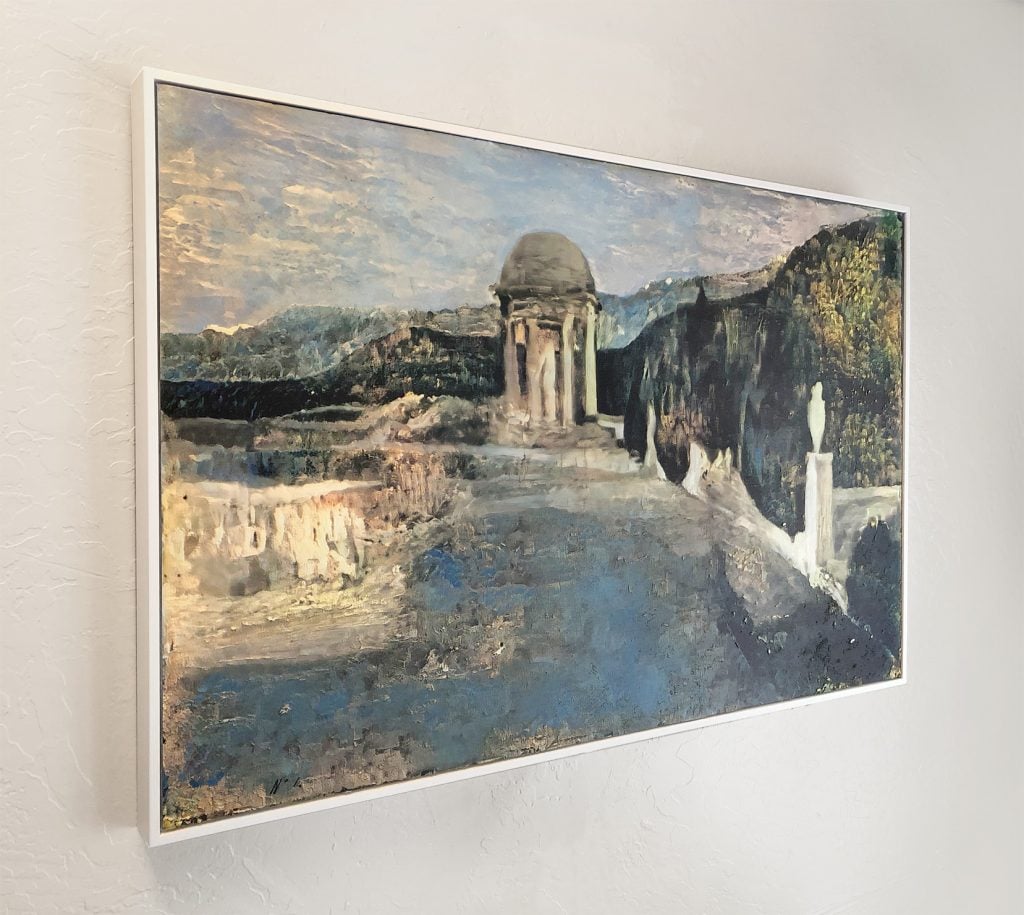
Oxia Palus recreated this Santiago Rusiñol “Neo-Master” based on X-rays of a Pablo Picasso painting. Photo courtesy of Oxia Palus.
Based on that assumption, Bourached and Cann trained the A.I. in Rusiñol’s style, and generated a possible color version of the recently discovered X-ray.
Then the duo created an edition of 100 3-D printed canvases of the lost painting, each linked to an NFT on a blockchain.
“It’s something that hasn’t been done before and is actually a patent-pending approach for us,” Bourached said. “The layering of this paint and ink on a canvas is pushing the state of the art in 3-D print technology.”
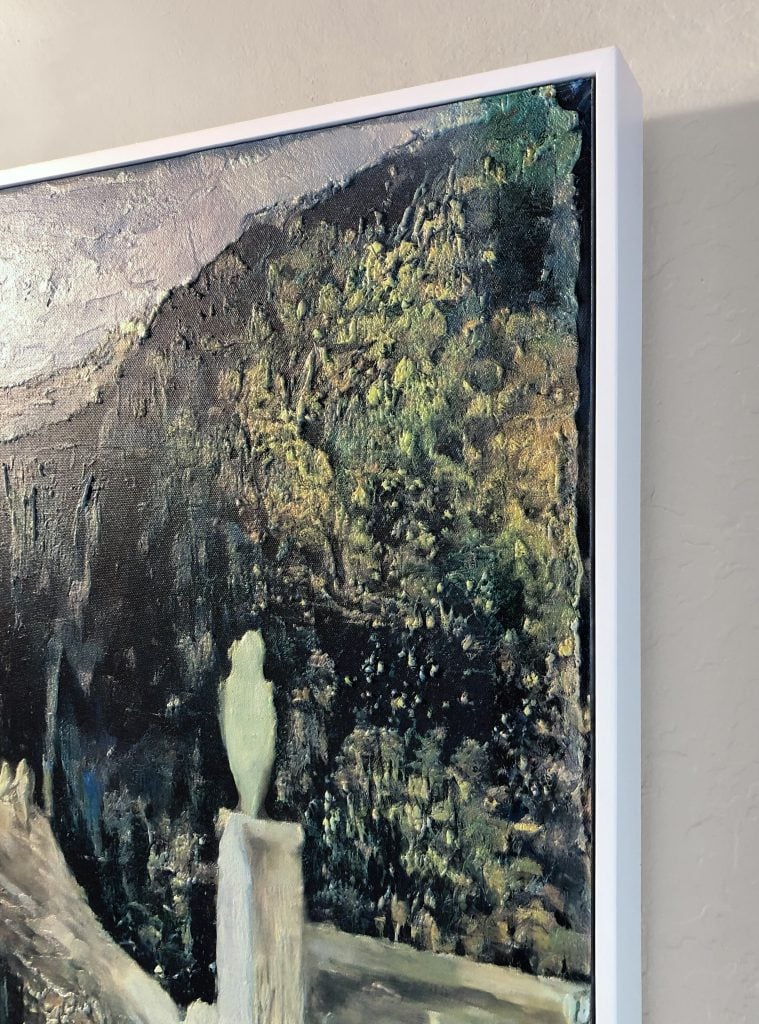
Oxia Palus recreated this Santiago Rusiñol “Neo-Master” based on X-rays of a Pablo Picasso painting, 3-D printing individual brushstrokes. Photo courtesy of Oxia Palus.
The editions, for sale at MORF Gallery for $11,111.11 each, also feature anti-fraud technology, with a unique code linked to the associated NFT inked on the underlying canvas. (The paintings can only be purchased in traditional dollars, not cryptocurrency.)
There are no plans to donate one of the copies to the AGO, but Bourached and Cann hope Oxia Palus can partner with institutions in the future.
“From an educational perspective,” Bourached said, “it would be amazing if you could have both pieces next to one another in a museum.”